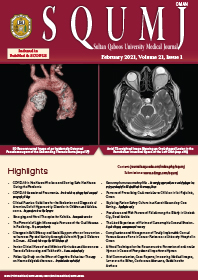Main Article Content
Abstract
Objectives: Falls and fall-related consequences are a major public health problem in the elderly. This study aimed to measure the prevalence of falls and fall-related risk factors among elderly individuals in Saudi Arabia. Methods: This cross-sectional study was conducted between January and October 2019 among 280 elderly patients aged >60 years old attending 10 randomly selected primary healthcare centres in Unaizah City, Qassim Province, Saudi Arabia. Data were collected using the validated 10-item Missouri Alliance for Home Care (MAHC-10) fall risk assessment tool. Results: A total of 269 participants were included in the study (response rate: 96.1%). The prevalence of falls over the preceding year was 31.6%. Females fell more frequently than males (34.5% versus 28.5%) and most falls occurred indoors (84.7%). Various risk factors were associated with fall risk including being aged >80 years (adjusted odds ratio [aOR]: 5.17, 95% confidence interval [CI]: 1.66–16.14), polypharmacy (aOR: 2.40, 95% CI: 1.01–5.71) and environmental factors (aOR: 2.79, 95% CI: 1.24–6.28). However, more educated participants had a lower risk of falling (aOR: 0.26, 95% CI: 0.09–0.77). There was also a significant association with the MAHC-10 fall risk score (P = 0.043). Conclusion: There was a high prevalence of falls among the elderly in Unaizah City. Various factors were associated with falls including advanced age, polypharmacy, age-related changes and environmental factors. As the majority of fall events occurred indoors, home safety improvements are recommended. Moreover, additional larger-scale research is necessary regarding fall-related risk factors and fall prevention initiatives among elderly individuals in Saudi Arabia.
KEYWORDS
Elderly; Falls; Geriatrics; Public Health; Prevalence; Risk Factors; Saudi Arabia.
Article Details

This work is licensed under a Creative Commons Attribution-NoDerivatives 4.0 International License.
